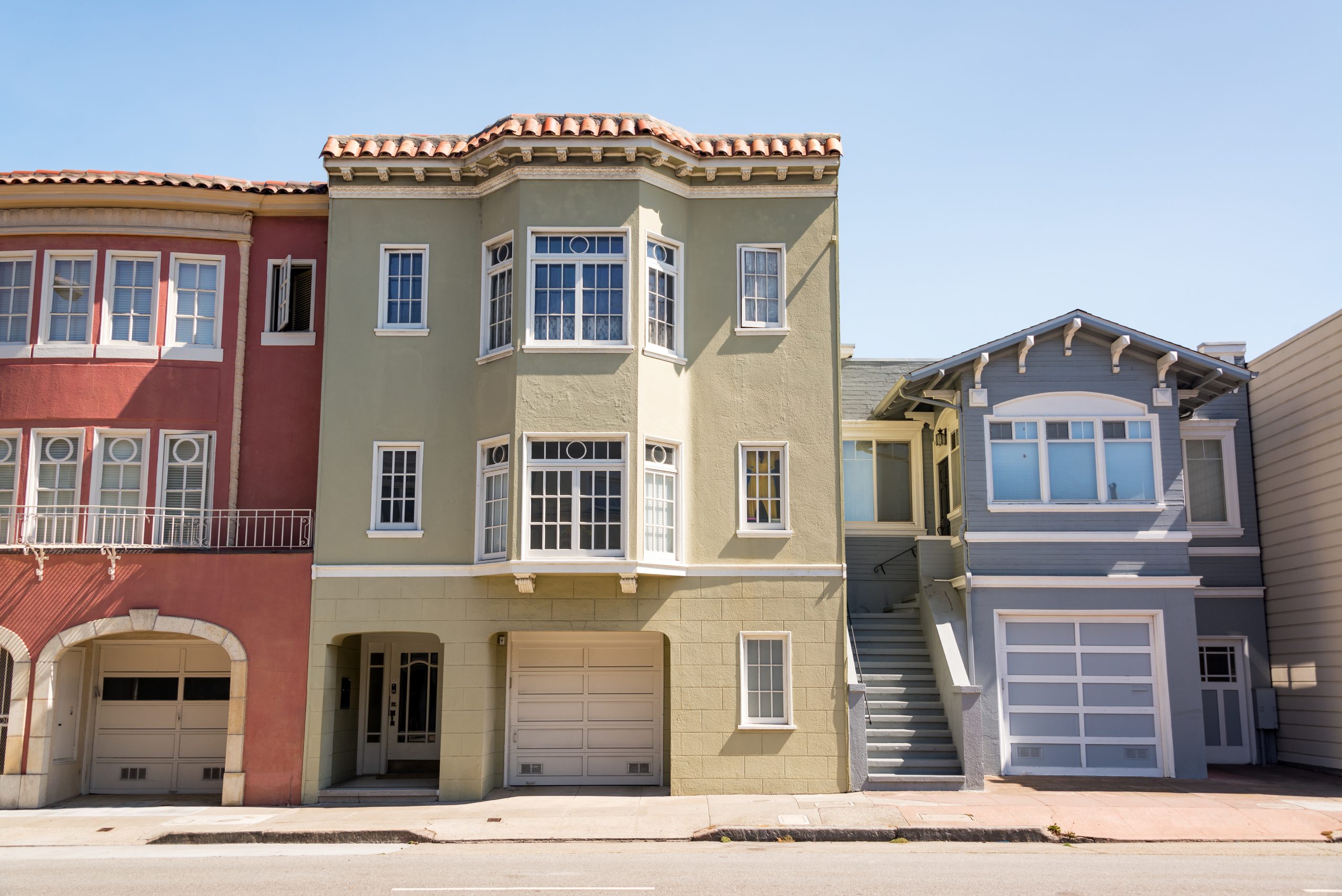The Department of Building Inspection and the San Francisco Fire Department have drafted a new Information Sheet EG-02, which provides guidelines for R-3 projects that are unable to meet the Building and Fire Code (SFBC) Section 1030, which requires emergency escape and rescue openings (EEROs) to open directly into a public way or to a yard or court that opens to a public way. The draft language below has been approved by the Code Advisory Council and has been submitted to the Building Inspection Commission for final approval.
“SFBC Section 1030 requires emergency escape and rescue openings (EEROs) to open directly into a public way or to a yard or court that opens to a public way. In addition, on December 3, 2018, the California State Fire Marshal issued a Code Interpretation that EEROs in Group R occupancies are required to be accessible to emergency rescue personnel using ground ladders.
This information sheet addresses the condition where the EEROs open to a yard or court that does not open to a public way for R-3 occupancies and thus inhibits the ability for ground ladder access to the EEROs for rescue.
The intent of the code is that windows required by SFBC Section 1030 be available so that occupants may self-rescue and escape from a sleeping area from the EERO to the exterior of the building without having to travel through the building itself. Additionally, the EERO is available for the Fire Department to enter sleeping areas to rescue occupants. If the EEROs open to a yard or court that has no access to a public way, they will not meet the requirements of the code where both escape and rescue can be accomplished.
Trigger: SFBC Section 1030 identifies when EERO requirements are applicable. In addition, any project where proposed scope of work further restricts access for the Fire Department to perform rescue at the EEROs will be subjected to SFBC Section 1030 review.
Projects may request for approval of local equivalency where both of the following conditions are met:
- The escape criteria for the EERO may be accomplished where the EERO opens into a yard with a minimum of 25 feet depth.
- The rescue criteria for the EERO at a yard or court that has no access to the public way shall be proposed by the project sponsor and evaluated at the time of submittal on a case-by-case bases by the Supervisor or Manager. All other conditions will also be evaluated on a case-by-case basis by the Supervisor or Manager. A pre-application meeting and/or approval of AB-005 is required.
ACCEPTABLE LOCAL EQUIVALENCIES:
In the event that EEROs open to a yard or court that does not open to a public way for R-3 occupancies, the following are four local equivalencies acceptable by the Department of Building Inspection and the Fire Department.
Request to use the following local equivalencies shall be accompanied by a request for approval of AB-005 and will be reviewed on a case-by-case basis. These requirements do not alleviate and shall not diminish any other code requirements established in the SFBC and SFFC.
Alternative 1 – Fire Department Ground Ladder Access: The escape criteria for the EERO may be accomplished where the EERO opens into a yard with a minimum of 25 feet depth. The rescue criteria for the EERO at a yard or court that has no access to the public way shall be accomplished with a minimum 3 feet wide continuous pathway that can accommodate a 22-foot straight ladder from the Public Right of Way to the yard or court shall be provided. A path of travel diagram shall be provided showing the ability for a 22-foot ladder’s ability to navigate from the public way to the yard or court where the EERO faces.
Commentary 1: The Fire Department uses a 22-foot straight ladder or a 35-foot extension ladder to reach EERO’s on the 2nd and 3rd floors. Thus, the Fire Department needs a minimum clear 3 feet wide pathway to carry the 22-foot straight ladder and 35 foot extension ladder (21 feet unextended) from the street, through a building, to the ground below the EERO.
Alternative 2 – Increased Fire Protection: For existing buildings only, increased fire-rated construction shall be provided throughout the building along with a fire sprinkler system throughout.
Commentary 2: SFBC Section 1030 exception allows higher occupancy of R1 and R2 classifications with type A construction equipped throughout with an approved automatic sprinkler system to be exempt from requirements of Section 1030. Similarly, for existing buildings only, where the existing building envelope spans such that the EEROs open to a yard or court that does not open to the public way, increased fire protection for SFBC Section 1030 exception will be acceptable since R3 occupancy pose a less hazardous occupancy than R1 or R2 occupancy in which this exception applies. However, alternative 2 will not be acceptable for new R3 buildings since SFBC Section 1030 shall be accomplished.
Alternative 3 – Roof Access for Rescue: The escape criteria for the EERO may be accomplished where the EERO opens into a yard with a minimum of 25 feet depth. The rescue criteria propose rescue access from the roof level into EERO’s where EERO’s open to a yard or court that has no access to the public way. The roof slope shall be limited to not more than 4:12 pitch at any location along the roof access route to the yard or court.
The vertical access component with the following requirements is required between the roof level and the level of each EERO:
- Stairs compliant with CBC Section 1011 with the exception that spiral stairways and alternating tread devices are not permitted.
- Alternate stair design shall have a maximum stair incline of 72 degrees from horizontal.
A balcony, deck, or landing is required directly outside of each EERO:
- Minimum 3 feet wide in the direction perpendicular to the EERO.
- Minimum length shall be the width of the EERO opening.
- Any intermediate landings or platforms shall have the minimum dimensions of 36-inch deep by 72-inch long.
Alternative 4 – Yard Access for Rescue: The escape criteria for the EERO may be accomplished where the EERO opens into a yard with a minimum of 25 feet depth. The rescue criteria for the EERO at a yard or court that has no access to the public way proposes access for rescue from the yard level.
A vertical access component with the following requirements is required between the ground level and the level of each EERO:
- Stairs compliant with CBC Section 1011 with the exception that spiral stairways and alternating tread devices are not permitted.
- Alternate stair design shall have a maximum stair incline of 72 degrees from horizontal.
A balcony, deck, or landing is required directly outside of each EERO:
- Minimum 3 feet wide in the direction perpendicular to the EERO.
- Minimum length shall be the width of the EERO opening.
- Any intermediate landings or platforms shall have the minimum dimensions of 36-inch deep by 72-inch long.
Commentary 3 and 4: Where access for a 22-foot ladder cannot be provided, stairs may be provided for the Fire Department to access EERO’s and enter sleeping areas for rescue of occupants in place of ladder access. The Fire Department needs a minimum of a 3-foot-wide stairway, platform, and pathway to be able to work. The working angle of Fire Department ground ladder is 72 degrees from horizontal, and therefore shall be the steepest angle of a proposed stairway.”
We thank the Department of Building Inspection and San Francisco Fire Department for the hard work crafting these solutions and look forward to the final approved information sheet.
Authored by Reuben, Junius & Rose, LLP Manager, Post Entitlement Division Gillian Allen.
The issues discussed in this update are not intended to be legal advice and no attorney-client relationship is established with the recipient. Readers should consult with legal counsel before relying on any of the information contained herein. Reuben, Junius & Rose, LLP is a full service real estate law firm. We specialize in land use, development and entitlement law. We also provide a wide range of transactional services, including leasing, acquisitions and sales, formation of limited liability companies and other entities, lending/workout assistance, subdivision and condominium work.



